theartsdesk at the East Neuk Festival: Church strings, garden horns | reviews, news & interviews
theartsdesk at the East Neuk Festival: Church strings, garden horns
theartsdesk at the East Neuk Festival: Church strings, garden horns
Al fresco cornucopia, stunning new academy and a utopia of seaside chamber music
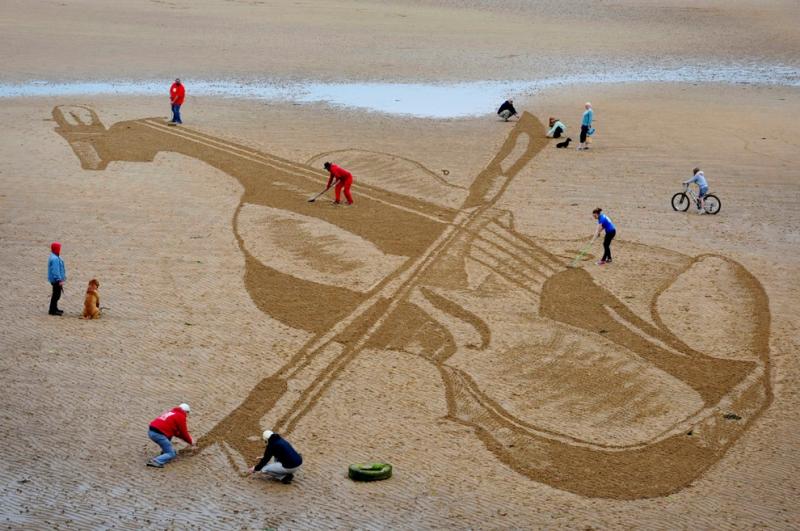
A peninsular spirit of place and the greatest of instrumentalists drew me a second time to the eastern nook (hence the “Neuk”) of Fife. But could a second report for theartsdesk be justified – wasn’t the premise the same for the 11th East Neuk Festival as it had been at the 10th? Not quite.
Escaping the heat of London after its most airless day ever, it was a relief to get off at Leuchars station some five and a half hours later and roll in the cooler air through the gentle landscape south of St Andrews. My destination was a place I fell in love with last year, the rather grand but unpretentious bed and breakfast of Cambo House at the heart of an estate with aforementioned walled garden – the largest and most magical I’ve ever seen – a glen running down to sandy beaches and a working potato barn with amazing acoustics where the Sibelius and Britten of last year were to yield to Bach and Handel.
 I’d arrived to be in time for the second of the two Retreat concerts the next morning, but my evening prelude, halfway through the week of events, gave me the chance to hear the first of two different facets from the Los Angeles based Calidore Quartet (pictured right). As the clean-lined interior of Kilrenny Church took on a hothouse steaminess while the rain poured down outside, they shook their audience to the core with unexpectedly violent Mendelssohn, the F minor Quartet he completed shortly after his beloved sister Fanny’s death and just before his own. It’s a comfortless distance from what we like to think of as dear, sweet Mendelssohn, and the Calidores’ gutty, knife-edge attack – which my neighbour rightly compared to the fierce engagement of the Pavel Haas Quartet – only made it more so, above all in the astonishing discords at the heart of the finale. There was to be even more quirkiness, but hardly much more relief from a restless soul, in an even greater F minor masterpiece, Beethoven’s Op 95, “Serioso” indeed.
I’d arrived to be in time for the second of the two Retreat concerts the next morning, but my evening prelude, halfway through the week of events, gave me the chance to hear the first of two different facets from the Los Angeles based Calidore Quartet (pictured right). As the clean-lined interior of Kilrenny Church took on a hothouse steaminess while the rain poured down outside, they shook their audience to the core with unexpectedly violent Mendelssohn, the F minor Quartet he completed shortly after his beloved sister Fanny’s death and just before his own. It’s a comfortless distance from what we like to think of as dear, sweet Mendelssohn, and the Calidores’ gutty, knife-edge attack – which my neighbour rightly compared to the fierce engagement of the Pavel Haas Quartet – only made it more so, above all in the astonishing discords at the heart of the finale. There was to be even more quirkiness, but hardly much more relief from a restless soul, in an even greater F minor masterpiece, Beethoven’s Op 95, “Serioso” indeed.
At least Beethoven emerges into a bright and, here, frenetic F major light at the end, nicely extended by the encore from Haydn’s C major "Bird" Quartet. But that wasn’t enough to make some of the festival stalwarts believe that the Calidores were capable of more than rough and relentless. They should have been impressed by a Saturday afternoon concert over in the more frequently used of the church venues, warm and lovely Crail. With the haar that had rolled in the previous evening and nipped a midnight picnic on the beach in the bud now lifted, warm sunshine flooded the building and was perfectly complemented by the music of Mozart’s Clarinet Quintet. Radiance suffused Osvaldo Golijov's Tenebrae, too, not shadowy at all despite its name but a very luminous homage to Couperin which one might have indulged less readily had it not been for the mellow afternoon mood as well as the exquisite contributions of soprano Mhairi Lawson and SCO principal Maximiliano Martín.
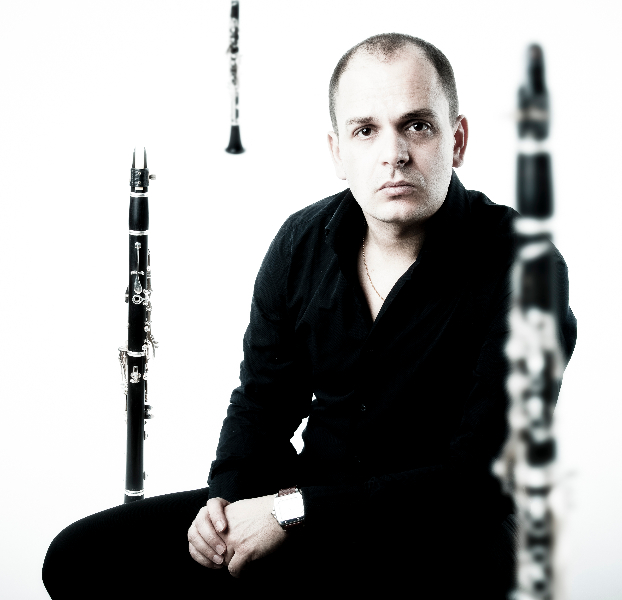 Martín (pictured left) combined the liquid and the robust, with some startling inventiveness in Mozart's Menuetto and an equal sensitivity from the Calidores – miraculous especially how cellist Estelle Choi brings something new and thoughtful to each repeat. But that re-creative way with phrases second time around is the hallmark of the quartet as a whole, which may be why I didn’t take so readily to the one and a half concerts given by the Brentano Quartet. Perhaps there’s even more polish here, but less of a willingness to communicate it directly. Britten’s Third Quartet, one of several poignant endgames looking over to another, Death in Venice, in the finale, wasn’t nearly inscaped enough. Their Schubert “Death and the Maiden” also took time to settle, with some uneasy intonation. Again I could admire the sophistication but viewed it much more from the outside; the Calidores compel you to listen. Comparisons may be unwelcome since the two groups seem to be friends, and came to listen to one another’s concerts; all were friendly and gracious in the conversations that are bound to happen in an intimate setting like this.
Martín (pictured left) combined the liquid and the robust, with some startling inventiveness in Mozart's Menuetto and an equal sensitivity from the Calidores – miraculous especially how cellist Estelle Choi brings something new and thoughtful to each repeat. But that re-creative way with phrases second time around is the hallmark of the quartet as a whole, which may be why I didn’t take so readily to the one and a half concerts given by the Brentano Quartet. Perhaps there’s even more polish here, but less of a willingness to communicate it directly. Britten’s Third Quartet, one of several poignant endgames looking over to another, Death in Venice, in the finale, wasn’t nearly inscaped enough. Their Schubert “Death and the Maiden” also took time to settle, with some uneasy intonation. Again I could admire the sophistication but viewed it much more from the outside; the Calidores compel you to listen. Comparisons may be unwelcome since the two groups seem to be friends, and came to listen to one another’s concerts; all were friendly and gracious in the conversations that are bound to happen in an intimate setting like this.
While Mendelssohn, a very welcome thread throughout the festival, was also on the Brentanos' Kilrenny programme, the first half of their Crail concert was shared between Maxim Rysanov and Ashley Wass. Now Rysanov is unquestionably one of the world’s greatest viola players – the only one who currently matches him is Lawrence Power – but his two chosen works on Friday evening were not going to display his gifts as well as his duo recital with Alexander Sitkovetsky (the two pictured below) the following morning. We got Schubert’s Arpeggione Sonata last year as well, and not even Rysanov’s bewitching way with phrases in league with Wass could make any of these seem less than commonplace – by Schubert’s extraordinarily high standards, at any rate. Alexander Desyatnikov’s variations with interludes on the last song of Schubert’s Winterreise, “Der Leiermann”, seemed oddly desultory, though of course Rysanov was compelling with the acid organ-grinding of the tune itself.
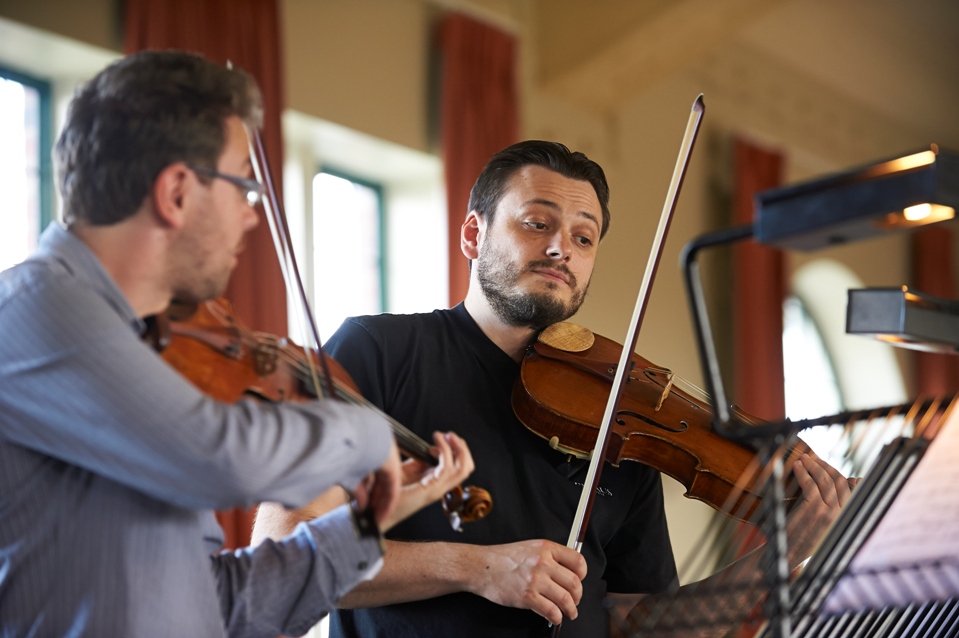 An extra piece slipped into the programme, Sergey Akhunov’s Erlkönig, more loosely based on the song in question, was a pleasing enough jeu d’esprit, but nothing as compared to the showstopper at the official end of the duo recital, Johan Halvorsen’s crazy tour around Handel’s Passacaglia from his Seventh Suite. This was a dazzling morning’s entertainment of never-ending delights: having worried that I wasn’t tuning into the Brentanos' Schubert, I knew from the very first phrase that Sitkovetsky produced in the Mozart K423 Duo that this is what real communicative musicianship is all about. And like the Calidores, these two can play with phrases as well as allow for an even greater spontaneity in exchange than is possible in a quartet.
An extra piece slipped into the programme, Sergey Akhunov’s Erlkönig, more loosely based on the song in question, was a pleasing enough jeu d’esprit, but nothing as compared to the showstopper at the official end of the duo recital, Johan Halvorsen’s crazy tour around Handel’s Passacaglia from his Seventh Suite. This was a dazzling morning’s entertainment of never-ending delights: having worried that I wasn’t tuning into the Brentanos' Schubert, I knew from the very first phrase that Sitkovetsky produced in the Mozart K423 Duo that this is what real communicative musicianship is all about. And like the Calidores, these two can play with phrases as well as allow for an even greater spontaneity in exchange than is possible in a quartet.
Festival director Svend Brown had asked Sitkovetsky and Rysanov to weave some of Bartók’s Duos for students into a selection of Bach’s two part inventions. The result wasn’t quite as through-composed as he’d anticipated, and we might have been better prepared to know just how many we were getting – a lot – but you couldn’t fault the contrasts, as much within the two composers’ exercises as between them – the articulation, the intonation: the works, in short, from two players who simply couldn’t be bettered. My delight would have known no bounds if only this astonishing pair could have given us something from the Martinů duos they've recorded, on a disc which is already on my shortlist for best of the year, and probably theartsdesk's Graham Rickson's too. 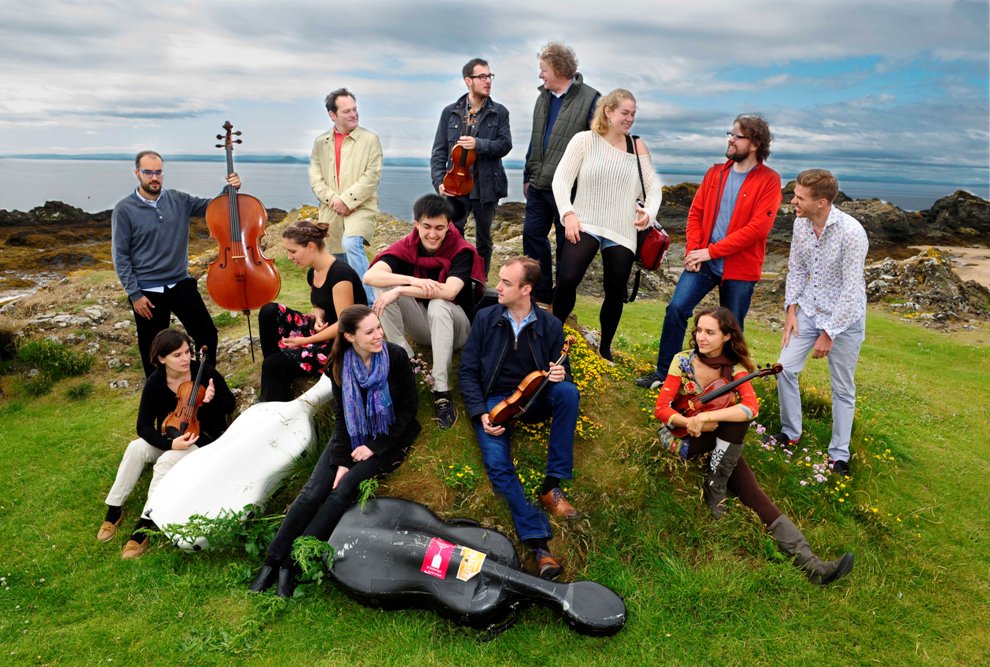 If I say that the Mendelssohn Octet which concluded the second "Retreat" concert on Friday morning similarly couldn't be surpassed, it’s perhaps more remarkable: here, after all, were seven of the 10 musicians (pictured above with their mentors at Elie, Janiczek in the red jacket second from the right), players who had never worked together before this week, clearly “conducted” by Janiczek from his modest position as third violin, producing not only the joy but also the subtlety of the 17-year-old Mendelssohn’s pure, undiluted genius. I'd feared it might sound just a little callow after the serene wisdom of Brahms’s later String Sextet – also sheer delight to hear, though the first violinist of the Catalunyan Cosmos Quartet who had come as a group may not have been quite as assured here as New Zealander Ben Baker in the Mendelssohn – but I was wrong. It was refreshing above all to hear Mendelssohn’s celebrated scherzo not so much as a jolly romp as extremely subtle, elusive fairy music à la Midsummer Night’s Dream.
If I say that the Mendelssohn Octet which concluded the second "Retreat" concert on Friday morning similarly couldn't be surpassed, it’s perhaps more remarkable: here, after all, were seven of the 10 musicians (pictured above with their mentors at Elie, Janiczek in the red jacket second from the right), players who had never worked together before this week, clearly “conducted” by Janiczek from his modest position as third violin, producing not only the joy but also the subtlety of the 17-year-old Mendelssohn’s pure, undiluted genius. I'd feared it might sound just a little callow after the serene wisdom of Brahms’s later String Sextet – also sheer delight to hear, though the first violinist of the Catalunyan Cosmos Quartet who had come as a group may not have been quite as assured here as New Zealander Ben Baker in the Mendelssohn – but I was wrong. It was refreshing above all to hear Mendelssohn’s celebrated scherzo not so much as a jolly romp as extremely subtle, elusive fairy music à la Midsummer Night’s Dream.
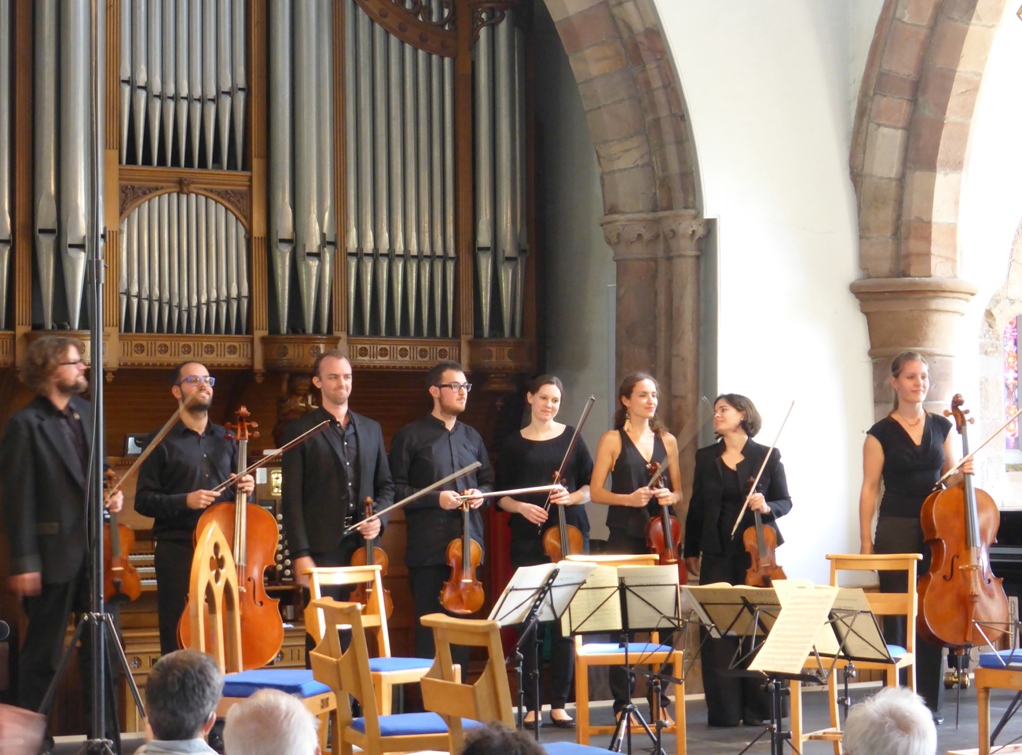 After the concert (Octetters pictured left), the Retreat youngsters were to go their own separate ways, but not before a delicious lunch including the best (local) strawberries any of us had ever tasted in the garden of a house by the sea just above Crail harbour. I got to meet many of them, and was impressed by their natural confidence, their way of introducing themselves and moreover of asking questions. There was no doubt that they’d been intoxicated by the experience, playing a raft of works from 10 in the morning until 11 at night every day not because that was expected of them, but because they wanted to. Janiczek was praised as the perfect teacher with no agenda, just a way of encouraging them to try things out, not necessarily following his approach but finding what might work best for them; and cellist David Watkin told them to forget "pencil performance" where everything you’re supposed to do in performance is written on the score.
After the concert (Octetters pictured left), the Retreat youngsters were to go their own separate ways, but not before a delicious lunch including the best (local) strawberries any of us had ever tasted in the garden of a house by the sea just above Crail harbour. I got to meet many of them, and was impressed by their natural confidence, their way of introducing themselves and moreover of asking questions. There was no doubt that they’d been intoxicated by the experience, playing a raft of works from 10 in the morning until 11 at night every day not because that was expected of them, but because they wanted to. Janiczek was praised as the perfect teacher with no agenda, just a way of encouraging them to try things out, not necessarily following his approach but finding what might work best for them; and cellist David Watkin told them to forget "pencil performance" where everything you’re supposed to do in performance is written on the score.
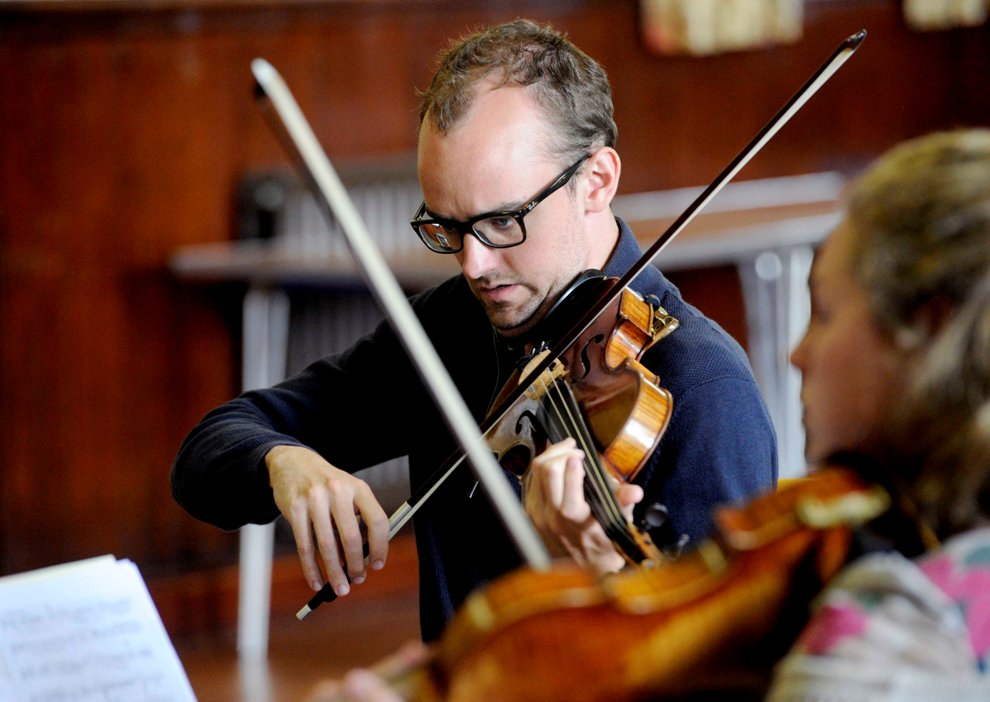 A tape recorder should have been to hand, but that might have spoilt the spontaneity of their farewell meeting, so I asked two of them subsequently to give me a few lines on what the Retreat had meant to them. “The whole week was fantastically intense," said Baker (pictured right). "It has been quite a shock readjusting to normal life – having to remind myself that it’s not every day I can have the luxury of completely immersing myself in chamber music around the clock. The most striking and unique thing about the week was the atmosphere and relationship between the young and slightly older musicians. To work and live in such close confines with such experienced and knowledgeable artists was special and edifying. Rising to the high standards of Alexander Janiczek, Krzystof Chorleski and David Watkin [there was a fourth mentor, pianist Alexander Longquich] was a formidable challenge, but it made it even more fulfilling to round off the week with two hugely enjoyable concerts: the perfect culmination of all the hard work and learning that the retreat was all about.”
A tape recorder should have been to hand, but that might have spoilt the spontaneity of their farewell meeting, so I asked two of them subsequently to give me a few lines on what the Retreat had meant to them. “The whole week was fantastically intense," said Baker (pictured right). "It has been quite a shock readjusting to normal life – having to remind myself that it’s not every day I can have the luxury of completely immersing myself in chamber music around the clock. The most striking and unique thing about the week was the atmosphere and relationship between the young and slightly older musicians. To work and live in such close confines with such experienced and knowledgeable artists was special and edifying. Rising to the high standards of Alexander Janiczek, Krzystof Chorleski and David Watkin [there was a fourth mentor, pianist Alexander Longquich] was a formidable challenge, but it made it even more fulfilling to round off the week with two hugely enjoyable concerts: the perfect culmination of all the hard work and learning that the retreat was all about.”
And here’s the verdict of vivacious Irish pianist Fiachra Garvey, brimming over with ideas and enthusiasms (sadly I didn’t get to hear him play in the first of the concerts): “Boy, was it a privilege, a great experience and a success! Usually the first time these open chamber music sessions happen there are teething problems, but the team in charge were superb and helped to make it an extremely conducive environment for music-making. During the week I worked on Mozart’s G minor Piano Quartet, Brahms’s First Piano Trio and Korngold’s Op 23 Suite (a new discovery for me and a cracking piece). Standards were incredibly high and the working relationship between all of us was extremely warm and positive. Beyond playing with great new musicians I also made great new friends and have no doubt that many of us will collaborate again. East Neuk Abú! [East Neuk forever!]".
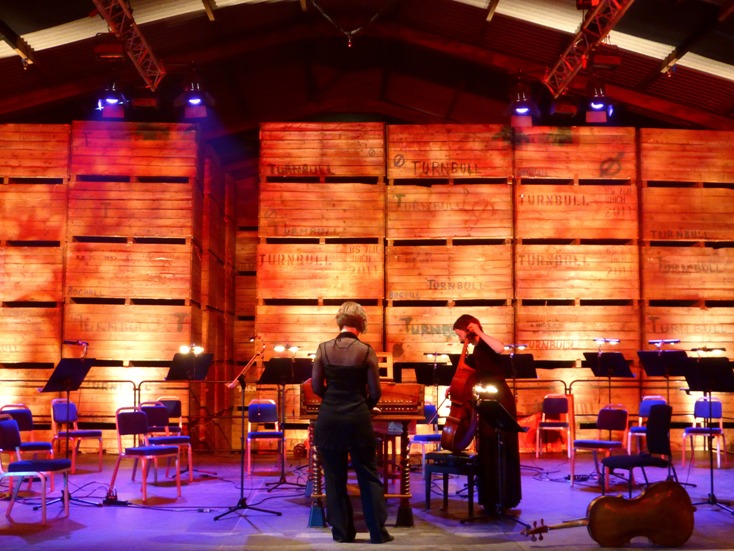 With the young musicians dispersed to the four corners of the globe, there were still important festival threads to be pursued. And “thread” is probably the right word for the way that Brown paved the way for what lay ahead. The Mendelssohn vein duly dispatched, Bach and Handel in the duo recital heralded the final concert in Cambo Barn. Having heard the Scottish Chamber Orchestra sounding wonderful in there last year, I was keen to hear John Butt’s Dunedin Concert live for the first time – further assisted acoustically by the potato packing crates piled up high behind the performers (pictured above before the concert), which apparently really did make a difference. The four soloists in Bach’s “Hunt” Cantata, deliciously introduced by the witty Mr Butt, and Handel arias – cleverly interwoven with movements from the first Water Music Suite – all had their distinctive vocal characters, but the standout for the future was baby bass David Shipley, who hit his stride in “Sorge una infausta procella” from Orlando.
With the young musicians dispersed to the four corners of the globe, there were still important festival threads to be pursued. And “thread” is probably the right word for the way that Brown paved the way for what lay ahead. The Mendelssohn vein duly dispatched, Bach and Handel in the duo recital heralded the final concert in Cambo Barn. Having heard the Scottish Chamber Orchestra sounding wonderful in there last year, I was keen to hear John Butt’s Dunedin Concert live for the first time – further assisted acoustically by the potato packing crates piled up high behind the performers (pictured above before the concert), which apparently really did make a difference. The four soloists in Bach’s “Hunt” Cantata, deliciously introduced by the witty Mr Butt, and Handel arias – cleverly interwoven with movements from the first Water Music Suite – all had their distinctive vocal characters, but the standout for the future was baby bass David Shipley, who hit his stride in “Sorge una infausta procella” from Orlando.
 Then there were those magnificent period horns, so expertly handled by Anneke Scott and Joe Walters. They provided the next transition – to the grand finale in Cambo’s walled garden the following afternoon. The horn theme was hymned in sand by regular true artists Jamie Wardley and Claire Jamieson of Sand in Your Eye, who also served up the violin on Elie beach (five strings and a chinrest for a left-hander provoked a lot of fatuous chat, good for publicity, of course, as the annual artwork always is). Unfortunately the yearly sculpture on Crail's High Street didn’t quite go according to plan: a lifesize figure playing the horn collapsed just before the inauguration and had to be replaced in three hours by the instrument itself (pictured above), not bad under the circumstances.
Then there were those magnificent period horns, so expertly handled by Anneke Scott and Joe Walters. They provided the next transition – to the grand finale in Cambo’s walled garden the following afternoon. The horn theme was hymned in sand by regular true artists Jamie Wardley and Claire Jamieson of Sand in Your Eye, who also served up the violin on Elie beach (five strings and a chinrest for a left-hander provoked a lot of fatuous chat, good for publicity, of course, as the annual artwork always is). Unfortunately the yearly sculpture on Crail's High Street didn’t quite go according to plan: a lifesize figure playing the horn collapsed just before the inauguration and had to be replaced in three hours by the instrument itself (pictured above), not bad under the circumstances.

In the case of the new commission, John Luther Adams’s "soundscape" Across the Distance (the composer rehearsing horn players of all ages pictured above) the mountain gave birth to a molehill, in one sense at least. You might well have got the same effect by asking the 32 players to sound notes of the harmonic series at staggered intervals. It was like the Rheingold Prelude but without the watery strings or the Rhinemaidens (who could have serenaded from the stream that runs through the garden). I’d expected some tuckets and brayings, but as ambient supporting act to the stars – the plants and birds of the garden itself – it provided the necessary sense of the marvellous.
Besides, there was a cheering mix of young and old, the young coming from the junior division of the Fife Horn Union, thriving thanks to the single-handed energy of an inspirational lady, Margaret Douglass. They treated us to a “Cambo Mambo” before we moved along the garden paths led by drummer Owen Gunnell to hear four percussionists in another JLA piece, Drums of Winter. Then the serene high point, where the most wonderful sounds were heard coming from the bridge – that had to be SCO horn player Alec Frank-Gemmill, and of course it was. After the last burst of birdsong which counterpointed the horns at the end, best heard lying on the grass by the stream, it was a quick exit for me, and another roll with a bassoonist driver through sunlit Fife countryside to Edinburgh Airport; and if, as one young player said he would, I didn’t cry on leaving, this very special part of the world has carved itself even deeper in my soul.
- Across the Distance is to be heard, in a different form with even more horns, on the Southbank on 23 August
- The next East Neuk Festival runs from 25 June to 3 July 2016
Share this article
The future of Arts Journalism
You can stop theartsdesk.com closing!
We urgently need financing to survive. Our fundraising drive has thus far raised £49,000 but we need to reach £100,000 or we will be forced to close. Please contribute here: https://gofund.me/c3f6033d
And if you can forward this information to anyone who might assist, we’d be grateful.

Subscribe to theartsdesk.com
Thank you for continuing to read our work on theartsdesk.com. For unlimited access to every article in its entirety, including our archive of more than 15,000 pieces, we're asking for £5 per month or £40 per year. We feel it's a very good deal, and hope you do too.
To take a subscription now simply click here.
And if you're looking for that extra gift for a friend or family member, why not treat them to a theartsdesk.com gift subscription?
more Classical music
 Kempf, Brno Philharmonic, Davies, Bridgewater Hall, Manchester review - European tradition meets American jazz
Bouncing Czechs enjoy their Gershwin and Brubeck alongside Janáček and Dvořák
Kempf, Brno Philharmonic, Davies, Bridgewater Hall, Manchester review - European tradition meets American jazz
Bouncing Czechs enjoy their Gershwin and Brubeck alongside Janáček and Dvořák
 Solomon, OAE, Butt, QEH review - daft Biblical whitewashing with great choruses
Even a top soprano and mezzo can’t make this Handel paean wholly convincing
Solomon, OAE, Butt, QEH review - daft Biblical whitewashing with great choruses
Even a top soprano and mezzo can’t make this Handel paean wholly convincing
 Two-Piano Gala, Kings Place review - shining constellations
London Piano Festival curators and illustrious friends entertain and enlighten
Two-Piano Gala, Kings Place review - shining constellations
London Piano Festival curators and illustrious friends entertain and enlighten
 Echo Vocal Ensemble, Latto, Union Chapel review - eclectic choral programme garlanded with dance
Beautiful singing at the heart of an imaginative and stylistically varied concert
Echo Vocal Ensemble, Latto, Union Chapel review - eclectic choral programme garlanded with dance
Beautiful singing at the heart of an imaginative and stylistically varied concert
 Scott, Irish Baroque Orchestra, Whelan, RIAM, Dublin review - towards a Mozart masterpiece
Characteristic joy and enlightenment from this team, but a valveless horn brings problems
Scott, Irish Baroque Orchestra, Whelan, RIAM, Dublin review - towards a Mozart masterpiece
Characteristic joy and enlightenment from this team, but a valveless horn brings problems
 Classical CDs: Voice flutes, flugelhorns and froth
Baroque sonatas, English orchestral music and an emotionally-charged vocal recital
Classical CDs: Voice flutes, flugelhorns and froth
Baroque sonatas, English orchestral music and an emotionally-charged vocal recital
 Kanneh-Mason, Britten Sinfonia, Shave, Milton Court - a grin and a big beaming smile
A pair of striking contemporary pieces alongside two old favourites
Kanneh-Mason, Britten Sinfonia, Shave, Milton Court - a grin and a big beaming smile
A pair of striking contemporary pieces alongside two old favourites
 theartsdesk at the New Ross Piano Festival - Finghin Collins’ musical rainbow
From revelatory Bach played with astounding maturity by a 22 year old to four-hand jazz
theartsdesk at the New Ross Piano Festival - Finghin Collins’ musical rainbow
From revelatory Bach played with astounding maturity by a 22 year old to four-hand jazz
 First Person: Manchester Camerata's Head of Artistic Planning Clara Marshall Cawley on questioning the status quo
Five days of free events with all sorts of audiences around Manchester starts tomorrow
First Person: Manchester Camerata's Head of Artistic Planning Clara Marshall Cawley on questioning the status quo
Five days of free events with all sorts of audiences around Manchester starts tomorrow
 Goldscheider, Brother Tree Sound, Kings Place review - music of hope from a young composer
Unusual combination of horn, strings and electronics makes for some intriguing listening
Goldscheider, Brother Tree Sound, Kings Place review - music of hope from a young composer
Unusual combination of horn, strings and electronics makes for some intriguing listening

Add comment